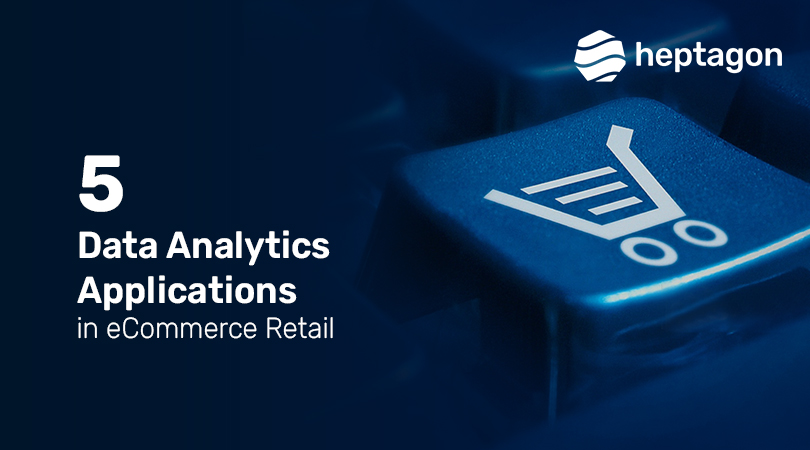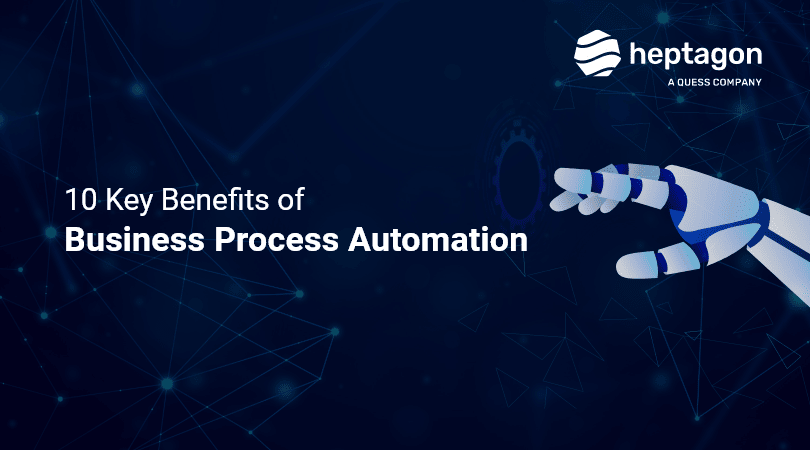Industry 4.0 is being fueled by the explosion in data. There’s a whole lot of information coming out of healthcare systems, factories, logistics, retailers, financial institutions, and most importantly, consumer-facing devices. What these data sources have in common is that they can allow businesses to solve customer problems, be it by creating a better shopping experience, increasing sales by targeting the right customers, improving healthcare quality and reducing costs, predicting equipment needs, or managing energy usage.
What sits at the center of this data revolution is the analytics infrastructure. It’s the engine that enables businesses to connect data sources together, extract knowledge, and act on it.
For the purpose of this article, we will evaluate different areas of eCommerce retail where data analytics proves to be immensely viable. Considering the fact that eCommerce retail is expected to make up about 25% of global retail sales by 2026, it clearly is the place where data analytics seems to be having the biggest (or, rather, the most meaningful) impact.
1. Inventory Risk Management
Let’s start with the most fundamental aspect of running an eCommerce business: inventory management. It’s undoubtedly a costly affair since it includes everything from forecasting and tracking to replenishment. Retailers often struggle to figure out how much inventory they should keep in stock to avoid running out while still maintaining the right level of operational efficiency to cover demand. From an eCommerce perspective, this can lead to a variety of issues:
- A mismatch between what users see and what is actually in stock
- Failure to satisfy the order, leading to refunds or chargebacks
- Lost sales due to out-of-stock items
- Loss of opportunity to sell additional items
- Poor customer experience
This is where advanced demand forecasting and analytics come to the rescue. Through the analysis of historical data, demand forecasting helps discern the future demand for inventory and empowers eCommerce retailers to pursue intelligent replenishment to ensure the right products are always in stock. The prediction can be based on a variety of aspects, such as seasonal purchase patterns, historic sales, product promotions, etc.
2. Customer Churn Prediction
“Acquiring a new customer is anywhere from five to 25 times more expensive than retaining an existing one,” writes Amy Gallo in Harvard Business Review, and rightly so. This old adage gets even more relevant when applied to eCommerce retail, where the attrition rate is high, customer loyalty is hard to realize, and competition is stiff.
One way to tackle attrition is to analyze customer data thoroughly and identify the patterns that serve as indicators for leaving the eCommerce platform. Using data analytics, companies can look into buying history, product selection, and usage behavior to determine which of their customers are most likely to churn.
For example, a retailer may see that people who buy a specific brand are more likely to churn. On a broader level, data analytics can help eCommerce retailers understand if there are transactional, product-related, geodemographic, and socio-economic factors that lead to churn. Armed with this knowledge, retailers can develop more effective customer retention strategies, such as offering special deals, loyalty programs, and other relevant discounts.
3. Recommendation Engines
Perhaps the most popular example of data analytics application in eCommerce is the use of recommendation engines. Especially prevalent in retail, these algorithms are designed to suggest products that match a customer’s taste, or at least something they wouldn’t mind purchasing based on data they have provided throughout the purchase journey or even from navigating through the product assortment.
Recommendation engines are a powerful tool for eCommerce players to reduce product search costs, boost overall sales, personalize experiences, and minimize cart abandonment. The most advanced recommendation engines use machine learning algorithms to personalize each and every user’s experience by continuously analyzing their customer data. An example of the same would be Quick Service Restaurants (QSRs), which use data analytics to drive menu recommendations based on what the customer has ordered in the past.
In fact, as of today, the idea of recommendations extends beyond just showcasing ads. It has gotten even more granular with respect to pushing consumers to take action. For example, through the Association Rule-Based Machine Learning method, eCommerce stores are able to recommend additional products during purchase. An example of the same is Amazon recommending a mouse pad as soon as someone adds a mouse to the cart.
4. Store Optimization
The user behavior on an eCommerce site is much easier to measure and analyze than in a physical store. This provides businesses with an opportunity to optimize the layout — this includes product placement, site structure, and so on. For example, analytics can reveal what products are most popular in specific areas of the store and through what kinds of customer behaviors (e.g., category browsing vs. direct access) the customer arrived at that particular product page.
Along those lines, data analytics can also help discern what factors lead to negative outcomes, such as cart abandonment, low conversion rates, etc. For example, data analysis across every customer touchpoint on a food delivery can help visualize where customers drop off the most and if the intentionally/unintentionally introduced friction elements in the menu UI and checkout process can be reduced or placed better to drive a certain action.
5. Pricing Strategy
The key objectives of every eCommerce pricing strategy should be to achieve a sufficient profit margin, contain churn, and boost conversion. The problem is that setting the right prices for each product amid market fluctuations and seasonal influences can be quite challenging, especially for retailers that sell a wide variety of products.
Thanks to regression analysis, eCommerce retailers can estimate the right price for each product according to its attributes and likely demand in various scenarios. This demand could be due to seasonality, competitor pricing, and other factors. This way, retailers can formulate a pricing strategy that fits into their business goals, helps sustain competitiveness, and avoids heavy discounting.
Wrapping Up
The key takeaway is that data analytics can ensure a huge competitive advantage to eCommerce retailers, provided they invest the necessary time and resources to develop the right analytics architecture according to the business requirements. But that’s not always easy, considering the high level of complexity involved in setting up and running a robust data analytics infrastructure. That’s where a technology partner like Heptagon can help. Explore our data analytics services here.



